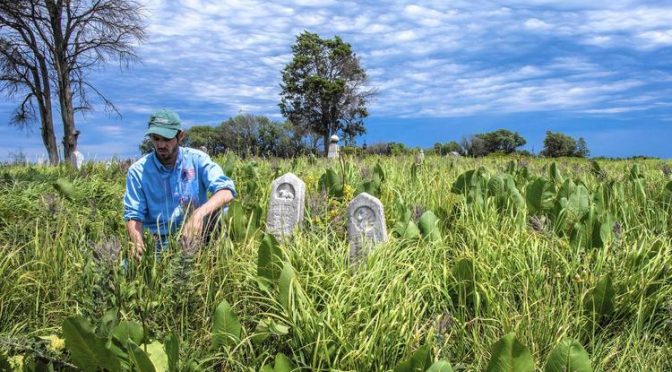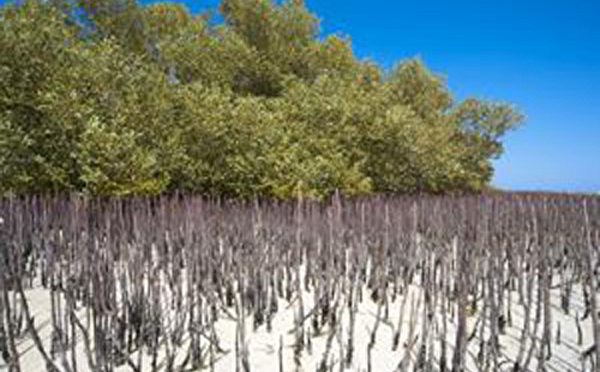Category: Ecosystems
-

Remnant Prairies Survive In Forgotten Cemetaries
Illinois once had 22 million acres of tall-grass prairie. Today, only 2,300 acres remain. But of those acres, many of the finest examples of untouched, pre-settlement prairie sit on 29 tenuous pioneer cemetery plots, fragile islands of untamed land in what is now an ocean of agricultural conformity. Together these cemeteries, often left undisturbed because…
-

Mangroves Cleanse Polluted Soil And Water Of Heavy Metals
Grey mangrove trees, Avicennia marina, filter heavy metals out of the surrounding soil and water. A new study from Indonesia has found that their leaf litter accumulates the most copper, followed by leaves and then roots. (Click on title for full story.)
-
Reconsidering The Value Of Alien Plants When Native Ecosystems Are Too Degraded
“Conservation practitioners are investing millions of dollars to eradicate invasive species, but what if some of those invasive species are actually benefiting native species and ecosystem services? Our experimental study shows for the first time that this can be the case.” (Click on title for full story.)
-
Some Plants Grow So Slowly They Require More Than One Botanist’s Lifetime For Proper Study
In 1974, a graduate student named David Inouye marked a small plant in an alpine meadow in Colorado with an aluminum tag. Forty-three years later, Inouye, now a professor emeritus at the University of Maryland, is still waiting for it to flower. “I’m hoping I live long enough,” he says. (Click on title for full…
-
What Happens After Invasive Plants Are Eradicated? It Will Never Be The Same
By the end of the three years of the study, the plant community in the plots where stiltgrass had been removed had diverged even further from the community present in the plots that had never been invaded at all (and from the ones were stiltgrass was allowed to remain). In other words, when the invaders…
-
The Greening Of Antarctica
Researchers in Antarctica have discovered rapidly growing banks of mosses on the ice continent’s northern peninsula, providing striking evidence of climate change in the coldest and most remote parts of the planet. Amid the warming of the last 50 years, the scientists found two different species of mosses undergoing the equivalent of growth spurts, with…
-
Healthy Native Soils Less Favorable To Invasive Plants
We found that background levels of soil N and an intact native soil microbial community are essential to the performance of two native prairie plant species, a grass and a forb, while an invasive forb is most successful under conditions of elevated soil nitrogen and when the native soil microbial community has been disrupted. While…
-
That Dingo Saved My Landscape
The plots on the dingo side of the fence showed no real differences in vegetation. But on the other side of the fence, the kangaroo-exclusion areas had about 12% more vegetation cover, implying that high numbers of the herbivores reduce the plant cover in a landscape. Fenced-off plots on the kangaroo side of the fence…
-
Urban Vacant Lots Provide More Ecosystem Services Than Nice Yards
Vacant lots contained three times more trees and twice the leaf biomass found in other settings. They were also more diverse. Most of that richness came from non-native species—but while much has been said about the negative impacts of exotic trees, the researchers noted, “there has been less focus on ecological benefits they might provide.”…
-
Climate Change Pushes Tough Decisions For Commercial Forestry Plantings
The interest for alternatives to be used in forest conversion has grown immensely with the change in climate. Naturally the desire for higher yields in growth, accompanied by a good suitability to a warmer and dryer climate, also play an important role. A search for alternate species in order to transform the forest to better…
